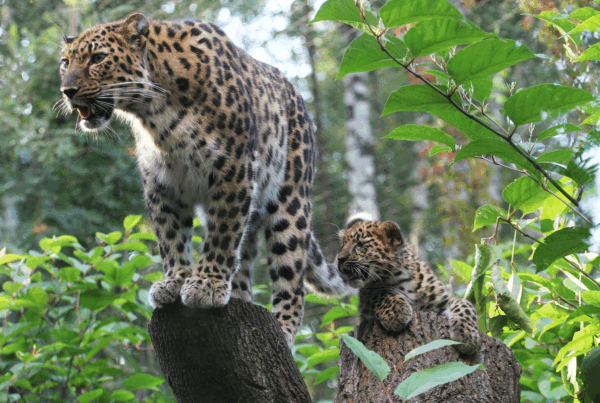- Domestic and stray dogs have long proved problematic to people, livestock, and wildlife in landscapes inhabited by tigers and leopards
- Unneutered and unvaccinated dogs can carry diseases that could be passed on to both wildlife and people.
- Catch, neuter, vaccinate, and return (CNVR) is the best way to control the dog population and prevent diseases spillover from the dog population to wildlife
Communities living adjacent to protected areas often maintain domestic animals, including dogs, which provide companionship, security, or aid in livelihoods. These human habitations also regularly hold a population of stray dogs which the people have lived side-by-side with for generations. Over the years, populations of these feral dogs have grown in these rural areas as proper steps are not taken to keep pets and strays contained, vaccinated, and neutered. Without the resources for effective animal healthcare and control, the safety of both people and wildlife is threatened.
The proximity of human settlements and their largely uncontrolled dog populations to protected areas, which are home to endangered species like tigers and Amur leopard, can inadvertently introduce various challenges. The boundaries of protected areas are permeable, and many people live in the buffer zones around them. The porous nature of protected area borders means large carnivores like big cats can enter human settlements to predate upon the canine residents, and the dogs can venture into big cat territory. As the interface between these animals collide there is an often-deadly risk of disease transmission from dogs to other carnivores such as rabies, distemper, and parvovirus.
Can dog diseases spread into big cat populations?
In short, yes!
A good example of this is Canine Distemper Virus (CDV), which, despite its name, impacts almost all carnivores and is very widespread within this order. It is a disease that can cause devastating outbreaks and has a high mortality rate. The first case of CDV in big cats in the wild was recorded in the early 1990s when an outbreak was recorded in the lion population in Tanzania and then later in Kenya. These early outbreaks had a huge impact with CDV spreading through the Serengeti and significantly reducing the lion population.
It wasn’t until 2010 that several cases of distemper were recorded within the tiger population. We now have an estimated case fatality rate for infected individuals of between 30-50% depending on the strain of the virus. If tiger populations were large and healthy, the way they used to be, then CDV would likely not be an issue. But for our remaining small, isolated populations, CDV could lead to the extinction of the species.
To find out more about disease transmission to big cats in our podcast episode below.
How can spay and neutering help?
Vaccinations and humane animal birth control measures are not only lifesaving for the dogs, but they also prevent ecosystems from being disrupted and habitats becoming overwhelmed with free-roaming dogs and their diseases.
As it’s difficult to immunise wild animals, focusing on preventing a disease spillover event from the domestic dog population to wildlife can be the best solution. This approach also helps protect communities as vaccinated and sterilised dogs are far safer for people living alongside them.
On this World Spay Day, let’s celebrate the power of responsible and humane animal control, recognise the critical role of disease prevention, and pledge to continue our efforts in safeguarding not just our furry companions but also the diverse wildlife we share our planet with. Together, through proactive measures and community-driven initiatives, we can create a world where both animals and humans thrive in harmony.





